Bus Travel in the USA: Companies, Routes, Tickets & Traveler Experiences
Find major bus companies, popular routes, ticketing tips, onboard amenities, and everything you need to know for a smooth and enjoyable bus travel experience in the USA.
Bus travel in the USA offers an affordable, convenient, and scenic way to explore the country. Whether you’re commuting between cities, traveling cross-country, or heading to international destinations like Canada and Mexico, the U.S. bus network provides various options.
Bus Travel
What are the major bus companies in the USA?
There are numerous intercity bus companies operating in the United States, offering budget-friendly and convenient travel options. Some of the biggest and most well-known bus providers include:
Greyhound: The largest and most widespread bus operator in the U.S., covering over 2,000 destinations across 48 states, including routes to Canada and Mexico.
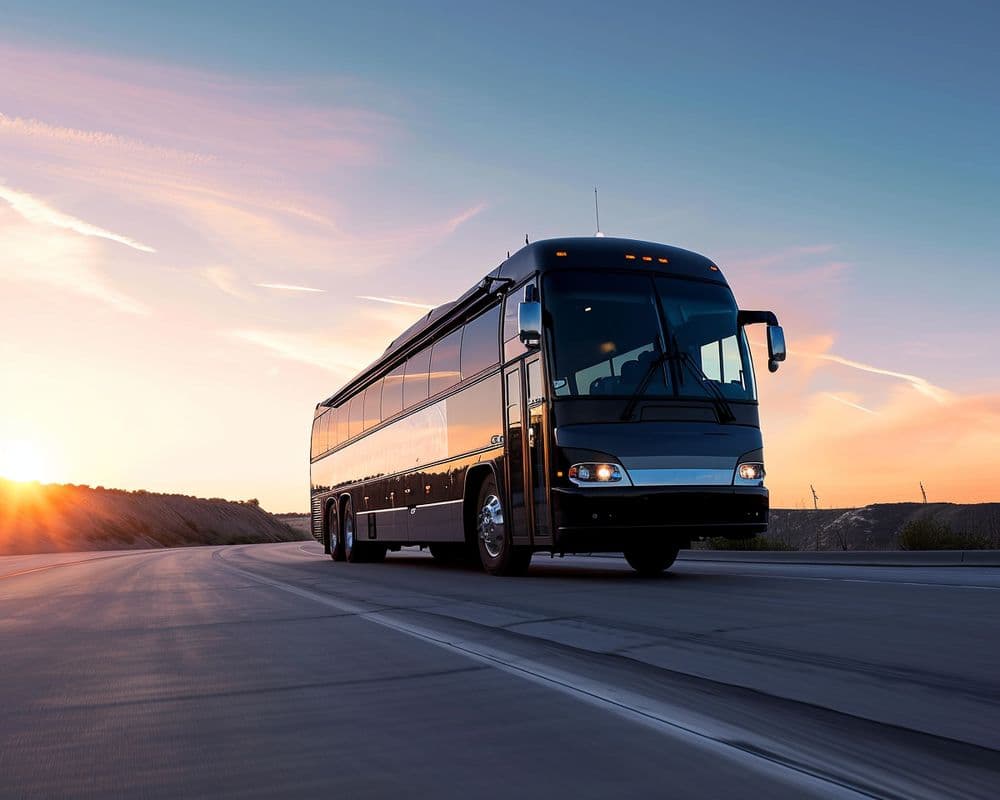
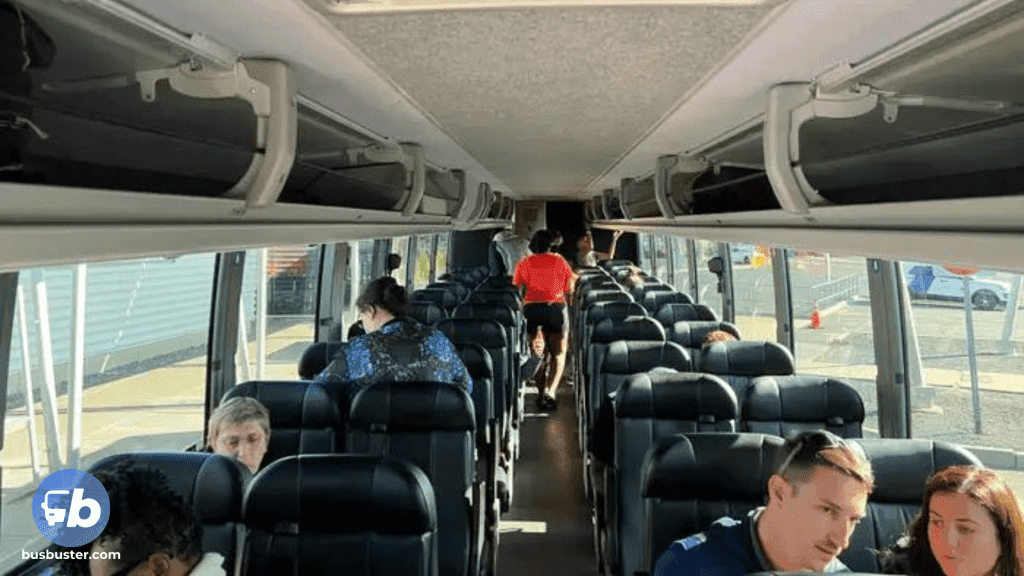

FlixBus: A growing international bus company offering affordable and frequent departures, especially in major cities like New York City, Los Angeles, and Washington, D.C.

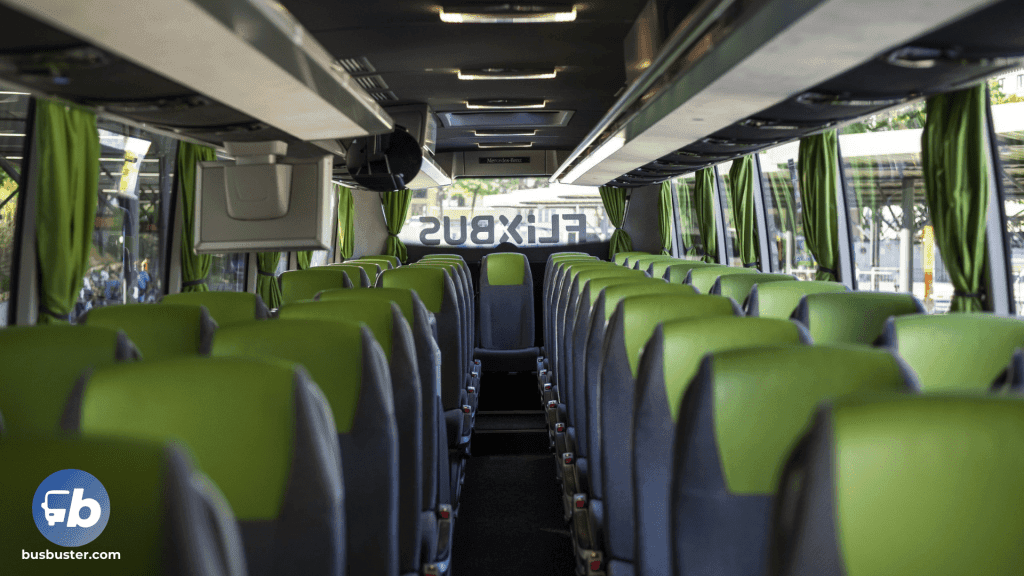
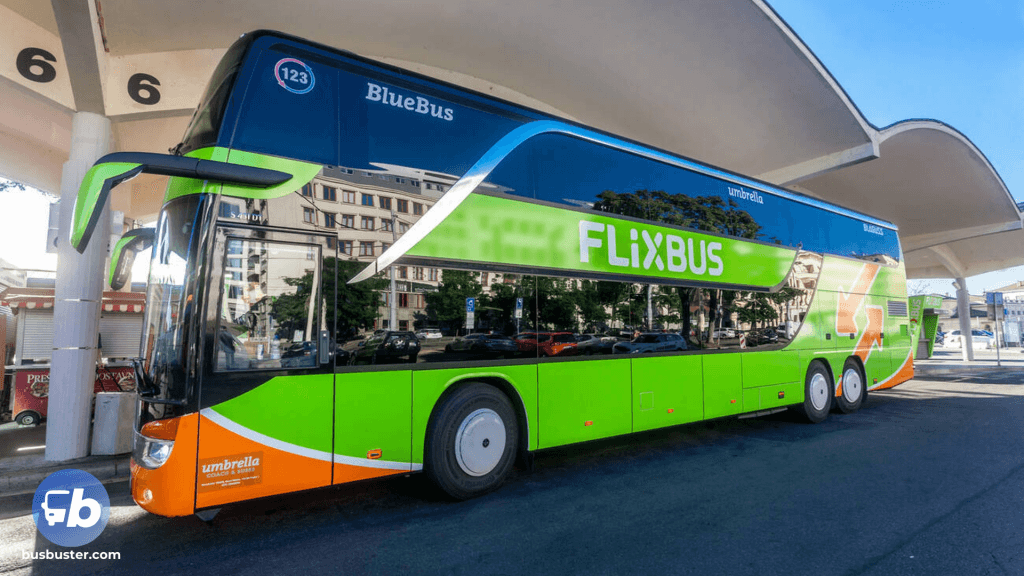
Megabus: Operating mostly along the East Coast and Midwest, Megabus is known for its low fares and direct routes between major metropolitan areas.

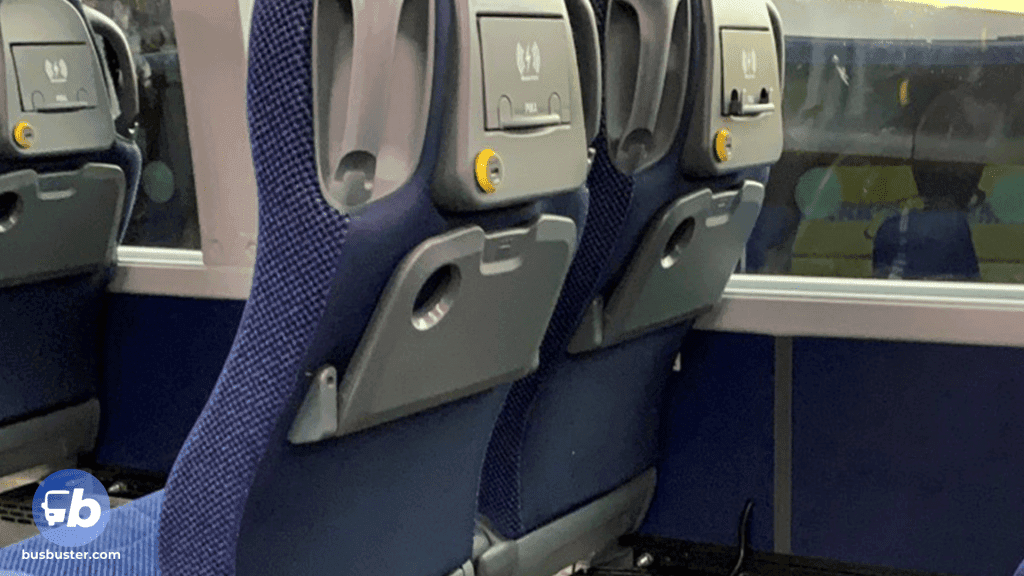
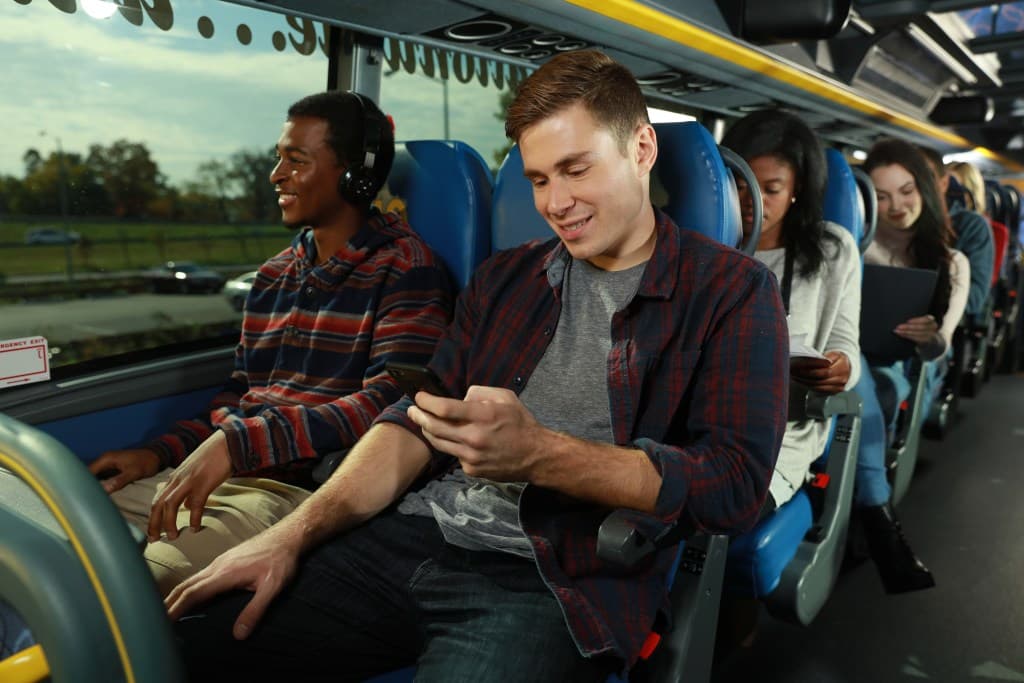
OurBus: A regional provider focusing on the Northeast and Florida, offering routes between cities like New York, Washington, D.C., and Boston.
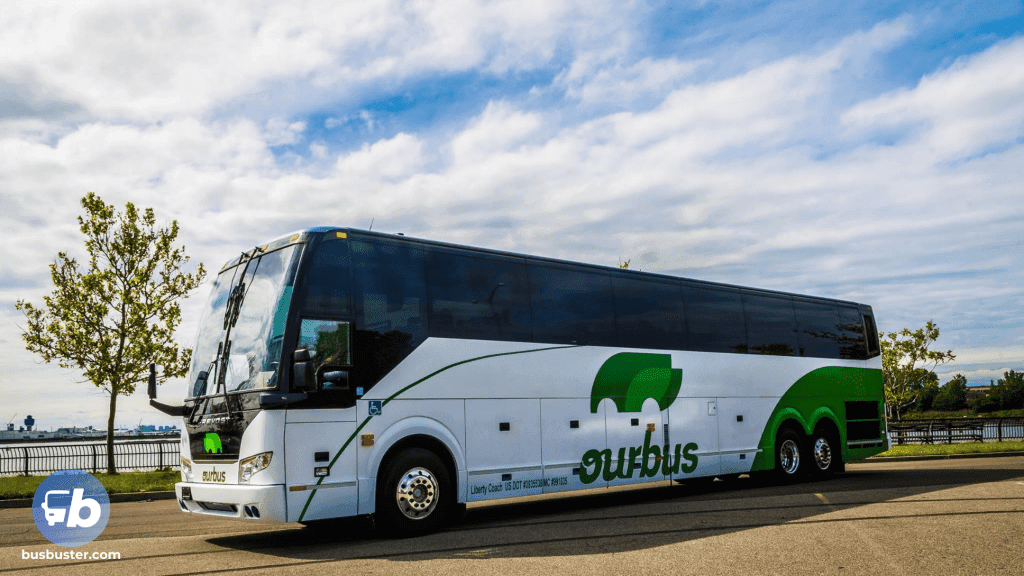
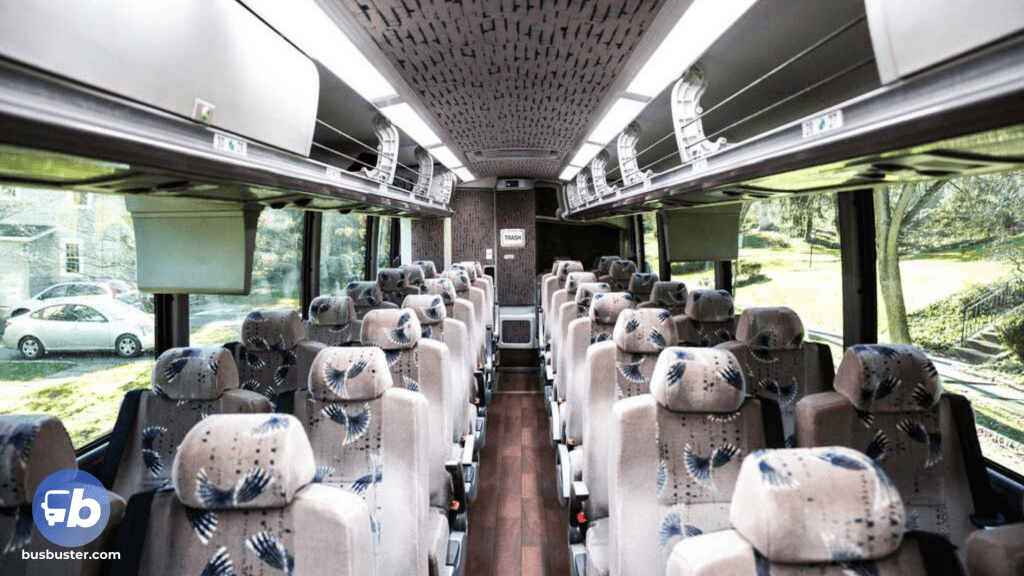

Trailways: A network of independent state bus operators, including Adirondack Trailways and New York Trailways, serving cities in the Northeast and beyond.
RedCoach: Specialized in Florida, Texas, and Georgia, delivers high-quality services with its fleet of luxury buses while ensuring the safety of its clients.
Go Bus: A regional provider with frequent services between major cities, including routes from Boston to New York City.
Each of these companies has unique advantages in terms of price, route availability, and onboard amenities.
What are the most popular bus routes in the USA?
Many of the busiest and most popular bus routes connect major metropolitan areas and tourist destinations. Some of the most traveled routes include:
New York City to Washington, D.C.: A high-demand route with multiple daily departures.
Los Angeles to Las Vegas: A popular route for travelers heading to Nevada’s entertainment capital.
Miami to Orlando: A key route for Florida tourists and commuters.
Chicago to Indianapolis: A commonly used route for Midwestern travelers.
San Francisco to Los Angeles: A scenic trip down the California coast.
Boston to New York City: One of the busiest intercity bus routes in the country.
What are the best scenic bus routes in the USA?
Yes! Some bus routes offer breathtaking views of the American landscape.
New York to San Francisco: A multi-day cross-country trip passing through the Rocky Mountains and deserts.
Miami to Portland, OR: A coast-to-coast adventure showcasing the Deep South, Midwest, and Pacific Northwest.
Boston to Charleston: A Historic Journey through the East Coast’s Colonial Landmarks.
For travelers who love road trips, buses offer an affordable way to see the country’s diverse scenery.
Can you take a bus from the United States to another country?
Yes, buses are a great way to travel between the U.S. and neighboring countries like Canada and Mexico.
Buses are a cost-effective and convenient way to cross borders, but travelers should ensure they have the necessary documentation, such as passports and visas, before departure.
Popular routes to Canada:
- Bus Companies:Amtrak Thruway, Flixbus, Greyhound, Northwestern Stage Lines, and Quick Shuttle.
- Distance: 118 miles.
- Price: Around $31.
- DailyFrequency: 39 trips.
- Fastest Bus: 3 hours and 15 minutes trip.
- Bus Companies: Amtrak Thruway, Flixbus, Greyhound, Northwestern Stage Lines, and Quick Shuttle.
- Distance: 333 miles.
- Price: Around $55.
- Daily Frequency: 18 trips.
- Fastest Bus: 12 hours and 15 minutes trip.
- Bus Companies: Adirondack, Flixbus, Greyhound, Passenger Bus Corp, and Trailways.
- Distance: 349 miles.
- Price: Around $66.
- Daily Frequency: 23 trips.
- Fastest Bus: 11 hours and 10 minutes trip.
Popular routes to Mexico:
- Bus Companies: Autobuses ABC, Autobuses Monarca, Executive Lines, Greyhound, Las Vegas Shuttles, Los Limousines, and Tufesa.
- Distance: 22 miles.
- Price: Around $10.
- Daily Frequency: 53 trips.
- Fastest Bus: 1 hour trip.
- Bus Companies: Autobuses Fronteras Del Norte, Autobuses Monarca, BlaBlaCar Bus, Flixbus, Greyhound, Los Limousines, Monarca, Pacific Coast, and Tufesa Internacional.
- Distance: 136 miles.
- Price: Around $22.
- Daily Frequency: 65 trips.
- Fastest Bus: 2 hours and 40 minutes trip.
- Bus Companies:Autobuses Fronteras Del Norte, Autobuses Monarca, BlaBlaCarBus, Flixbus, Greyhound, Los Limousines, Pacific Coast, and Tufesa Internacional.
- Distance: 276 miles.
- Price: Around $75.
- Daily Frequency: 54 trips.
- Fastest Bus: 10 hours and 50 minutes trip.
Bus Booking

How to book bus tickets in the USA?
Booking bus tickets in the U.S. is easy and can be done through:
- Official bus company websites: Purchase directly from providers like Greyhound, FlixBus, or Megabus.
- Bus stations and ticket counters: Some companies allow in-person purchases at major terminals.
- Mobile apps: Many bus operators have apps that enable users to book, modify, or cancel tickets digitally.
BusbusterPro tip: Bus fares are often cheaper when booked in advance, especially for popular routes and weekend travel.
Are there discounts available on bus tickets?
Yes, many bus companies offer discounts to specific groups, including:
- Seniors (65+): Usually a 5-10% discount.
- Children: Some companies allow free or discounted travel for young children if they sit on a guardian’s lap.
- Students: Special fares or discounts with valid student ID.
- Military personnel and veterans: Discounts are often available for active-duty members and veterans.
Always check the specific policies of the bus provider before booking.
How to save money on bus tickets?
Follow these quick and effective tips:
Book early for the cheapest fares.
- Prices increase closer to departure.
- Book 2-3 weeks in advance for the best deals.
Travel during off-peak hours and be flexible with travel dates.
- Avoid weekends and holidays.
- Midweek, early morning, and late-night trips are cheaper.
- Shifting your trip by a day can reduce ticket costs.
Use student, senior, and military discounts.
- Check eligibility with a valid ID.
- Some companies offer up to 10-20% off.
Sign up for newsletters, alerts, and follow bus companies on Social Media.
- Get exclusive discounts and online flash sales.
- Stay updated on limited-time promotions.
- Find last-minutedeals and promo codes.
Join loyalty programs.
- Earn points for free or discounted future rides.
- Frequent travelers save more over time.
Use bus price comparison tools.
- Websites like Busbustercompare fares across multiple bus service providers.
- Find the lowest prices in one search.
- Compare different Bus Companies. Prices and amenities vary. Some offer free WiFi, extra legroom, or lowerbaggagefees.
Travel in groups for discounts.
- Some companies offer group rates.
- Booking together can lower the per-person cost.
Choose flexible tickets.
- Allows changes or cancellations.
- Avoids losing money if plans change.
Consider alternative pickup and drop-off locations.
- Major terminalsmay charge extra fees.
- Nearby stops can be cheaper.
Avoid extra fees.
- Check baggage policies to avoid extra charges.
- Opt for e-tickets to skip printing fees.
Use credit card travel perks.
- Earn cashback or travel points.
- Some cards offer discounts on transportation.
Bus Services
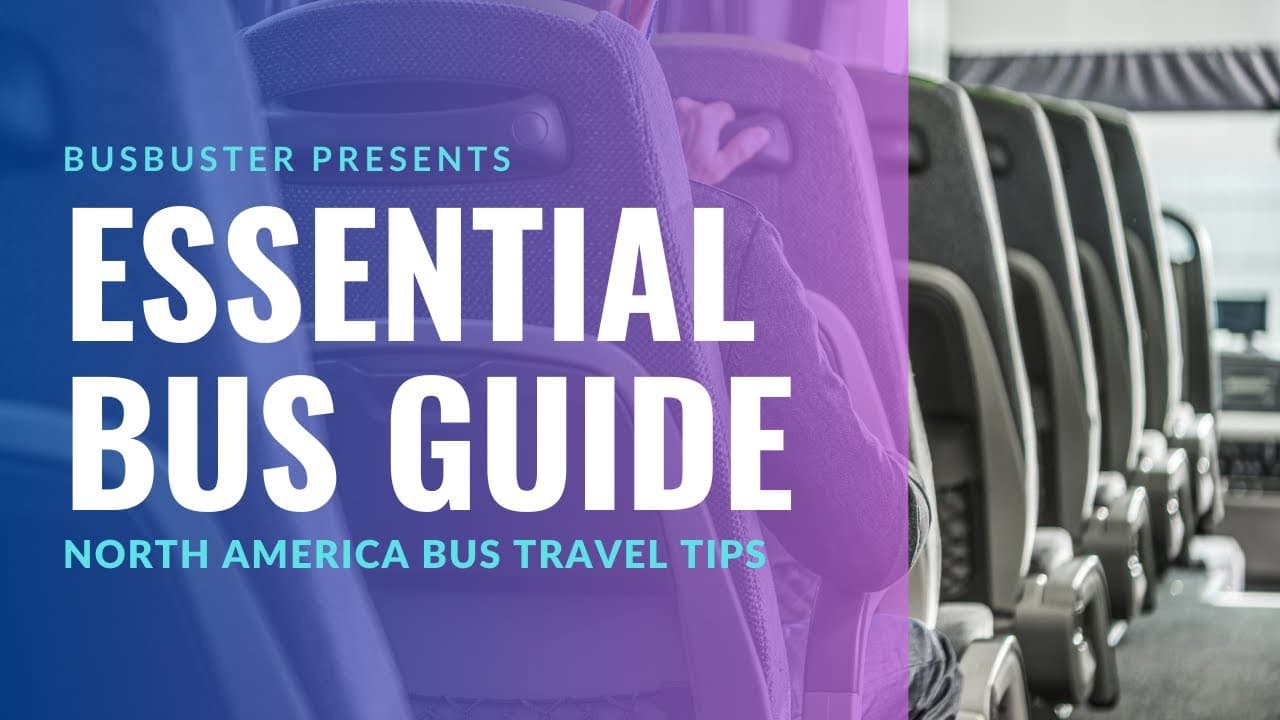
What amenities are usually available on long distance USA buses?
Bus travel in the U.S. has improved significantly, and most long-distance buses now offer:
- Onboard WiFi (though speed and availability may vary)
- Power outlets and USB charging ports
- Reclining seats with extra legroom on some services
- Restrooms on nearly all long-distance buses
- Overhead storage compartments for carry-on luggage
Luxury services, such as RedCoach and The Jet, provide even more comfort, including wider seats and premium onboard entertainment.
What baggage can you bring on the bus?
All bus companies allow passengers to bring luggage, but policies vary. Check Busbuster Help Center for all USA bus companies baggage rules and more.
Usually the following information applies:

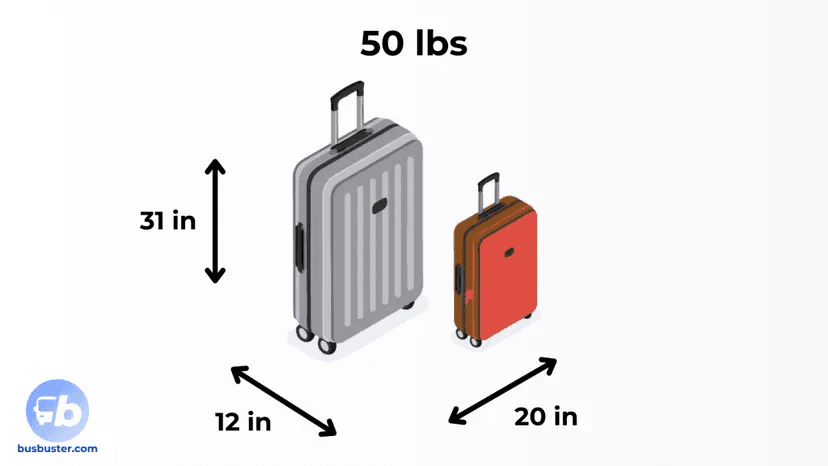
Carry-on bag
One small personal item (backpack or handbag) is allowed for free. Usualy:
- Maximum size: 16 x 12 x 7 inches (42 x 30 x 18 cm).
- Maximum weight: 25 lb (7 kg).
- Must fit in the overhead compartment or under the seat.
Busbuster Tip: Larger carry-on items, such as wheeled rectangular bags typically used for airlines, may not be permitted in the passenger area and will need to be stored as checked baggage.
Checked luggage
Some companies permit one or two free checked bags, while others charge extra.
- Maximum size: 31 x 20 x 12 inches (80 x 50 x 30 cm).
- Maximum weight: 50 lb (22 kg).
- Additional bags or oversized items may be subject to space availability, extra fees, or may not be allowed without purchasing an additional seat or ticket.
- It’s recommended to label luggage with your name and contact details for easy identification.
Busbuster Tip: Size and weight limits can vary, so check with your specific bus provider.
Excess Luggage
- Allowed subject to space availability.
- Additional fees apply for each extra piece.
Busbuster Tip: If you plan to bring additional luggage, it is recommended to purchase a second bus ticket in advance to guarantee the space.
Special Items
This includes large music instruments, sports baggage, strollers, etc. Contact the company in advance here to understand limits and fees.
Bicycles and Sport
These items are generally considered as one piece of checked baggage as long as they fit within the size and weight limitations of the cargo hold.
- Extra items requires advance booking and an additional fee.
- MaximumWeight: 75 lbs (34kg)
- Usually, a maximum of one bulky item per passenger.
- Maximum size and weight vary from company.
- Must be standard size.
Busbuster Tip: Tandems, E-Bikes, pedicels or tricycles are not allowed on buses.
Strollers
Strollers are allowed as Bulky Baggage.
- Limited to one stroller per child.
- MaximumWeight: 70 lbs (31kg)
- Strollers must be collapsible.
- Non-foldable strollers may count as your one checked item.
Wheelchairs and Mobility Devices
Wheelchairs and mobility aids are transported for free.
- Collapsible Wheelchairsor mobility devices: Free of charge and will be stored in the baggage compartment.
- Mobility Scooters: Allowed on most buses, but space is limited, and advance booking is recommended. Typically, there are two spaces available for wheelchairs or scooters on each bus.
- MaximumWeight: including the passenger of 600 lb (272 kg)
- Maximum Dimensions: 30 inches (76 cm) wide and 48 inches (122 cm) long.
Fragile or Valuable Items
Busbuster Tip: Don’t pack fragile or valuable items (e.g., electronics, jewelry) in checked luggage, as the company is not liable for these items.
No Pets allowed on United States and Canadian buses.
What is the seating arrangement on buses?
Most intercity buses in the U.S. operate on a first-come, first-served basis, meaning seats are not assigned unless you pay for a premium upgrade. Some companies, like Megabus and RedCoach, offer seat reservations for an additional fee.
Pro tip: Arrive at the bus station early to get a preferred seat, especially on busy routes.
What should I know about bus stations and stops?
Bus terminals vary widely in terms of size and facilities.
- Large bus stations in major cities often have waiting areas, restrooms, and food vendors.
- Some budget bus providers use curbside pickup points, meaning passengers board from a designated location on a city street.
- Smaller stations may have limited amenities, so plan ahead for food and restroom breaks.
Safety tip: Be mindful of your belongings at bus stations and avoid arriving late at night in unfamiliar areas.
What are the rules for food and drinks on buses?
Most bus companies allow passengers to bring snacks and non-alcoholic beverages on board. However, food should be odor-free and easy to eat to avoid disturbing fellow passengers.
BusbusterTip: Buy snacks before boarding, as options at bus stations tend to be expensive.
Can I bring my pet on a bus?
Most bus companies do not allow pets unless they are certified service animals. If you need to travel with a pet, check for alternative transportation options like trains, which have more flexible pet policies.
Check Busbuster Help Center for all buses pet policy in the USA.
What are some tips for long-distance bus travel?
- Arrive early to get a good seat, especially for unreserved seating.
- Bring a neck pillow, earplugs, and an eye mask for overnight journeys.
- Download offline maps to navigate your destination after arrival.
- Charge your devices before boarding, as power outlets may not always work.
FAQ for different types of bus travelers
Budget Travelers
How can I find the cheapest bus tickets?
Book in advance, prices tend to be lower the earlier you book. Travel on weekdays, weekend fares are often higher. Look for discounts, many companies offer deals for students, seniors, and military personnel. Compare bus companies, different providers may have varying prices for the same route.
Are buses really cheaper than trains or flights?
Yes! Buses are usually the most budget-friendly option for intercity travel, with fares as low as $10 on some routes. Even when factoring in baggage fees, bus travel is often more affordable than flights or trains.
Can I bring my own food and drinks to save money?
Yes, most buses allow passengers to bring food and non-alcoholic beverages. Buying snacks before boarding can help save money compared to station prices.
Business Travelers
Is bus travel a good option for business trips?
Yes, especially for short to medium distances. Many buses offer WiFi and power outlets for working on the go. Quiet seating options for a more focused environment. Frequent departures for flexibility in scheduling.
What is the most comfortable bus service for business travel?
Luxury bus services like RedCoach (Florida & Texas) and The Jet (Northeast U.S.) offers reclining, extra-wide seats, more legroom and fewer passengers per row, and premium onboard amenities like food service and workspace areas.
Can I reserve a seat in advance to ensure comfort?
Some companies, such as Megabus and RedCoach, allow seat reservations. If this option is available, it’s worth paying a little extra for more space or priority boarding.
International Travelers & Tourists
Do I need an ID to board a bus in the USA?
Yes. U.S. residents can use a driver’s license or state ID, while international travelers must carry a passport.
What do I need to cross the border into Canada or Mexico by bus?
A Valid passport (and visa, if required). U.S. visa or ESTA (for return to the USA, if applicable).Proof of onward travel or accommodation.
Are buses safe for solo international travelers?
Yes, but it’s important to arrive early at bus stations (especially at night). Always keep valuables in a secure bag.Use offline maps in case WiFi is unreliable.
Families Traveling with Kids
Is bus travel safe and comfortable for children?
Yes, but for a better experience choose daytime routes to avoid disrupting sleep schedules. Bring entertainment (tablets, books, coloring materials). Pack snacks and drinks to avoid unnecessary stops.
Do kids get discounts on bus tickets?
Yes, many companies offer free travel for infants under 2 years old (if they sit on a guardian’s lap). Discounts for children under 12 years old (typically 20% off). Some carriers require a child safety seat for young travelers.
Are there bathrooms on buses for long trips?
Yes, nearly all long-distance buses have onboard restrooms, but they are small and basic. It’s best to use station restrooms before departure.
Backpackers & Adventure Travelers
Are buses a good option for exploring national parks?
Yes, but access is limited. Some parks, like Yosemite and Grand Canyon, have nearby bus stops, but others require additional shuttles or car rentals. Amtrak’s Thruway buses connect some parks that lack train service.
Can I bring camping gear or a backpack on the bus?
Most bus companies allow one carry-on and one checked bag, but for extra-large items (like tents or hiking poles), check baggage policies before traveling.
Travelers with Disabilities
Are buses in the USA wheelchair accessible?
Yes, major bus companies comply with ADA (Americans with Disabilities Act) regulations and provide Wheelchair lifts and ramps, priority seating for passengers with disabilities, and assistance with boarding and luggage handling.
However, advance notice is recommended (usually 48 hours) if you require special assistance.
Are service animals allowed on buses?
Yes, certified service animals are allowed on all U.S. buses. However, emotional support animals are typically not permitted.
City Commuters
How reliable are intercity buses for daily commutes?
Some bus companies offer commuter passes for frequent travelers. However, traffic and unpredictable delays may make trains a better option for daily work commutes in certain areas.
Do buses have WiFi and power outlets for working?
Most long-distance buses advertise onboard WiFi, but speeds vary. Power outlets are available on newer buses, but it’s best to bring a portable charger just in case.
Are there bus passes for unlimited travel?
Greyhound offers QuickLink commuter passes on select routes, such as New Orleans to Baton Rouge, LA, and Mt. Laurel, NJ to New York City.
These passes allow unlimited travel within a set timeframe.
Busbuster overview on Bus Travel in the USA
Bus travel remains one of the most affordable and accessible ways to explore the U.S., especially for budget travelers and those heading to remote locations. With a variety of bus companies, routes, and amenities available, it’s easier than ever to plan a comfortable and convenient trip by bus.